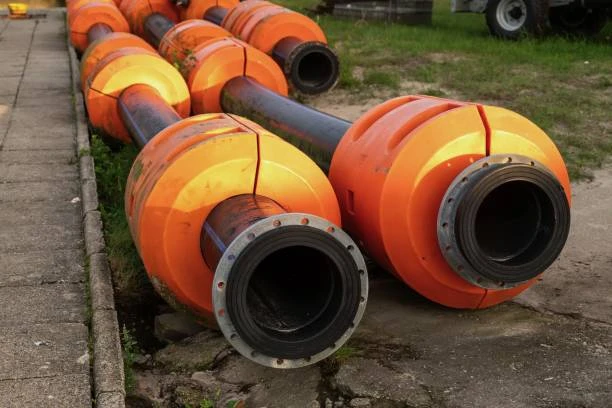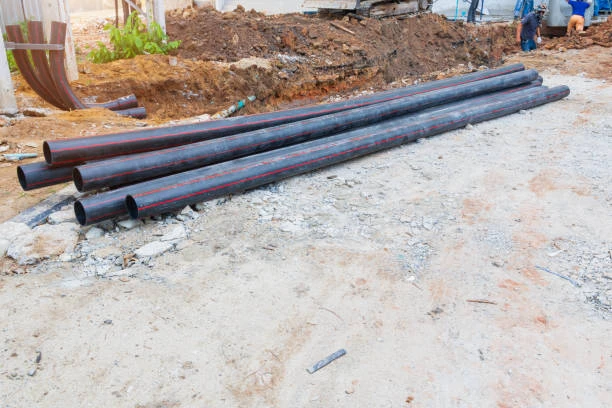In Boulder, Colorado, a significant upgrade to the storm-water system has taken place, involving the rehabilitation of aging corrugated metal pipes with High-Density Polyethylene HDPE pipe. This innovative approach not only enhances the efficiency of the storm-water management system but also showcases the benefits of using HDPE Pipe in infrastructure projects. Central to this rehabilitation effort are pipe press fittings, which play a critical role in ensuring reliable and durable connections. This article delves into the details of this project, the advantages of HDPE pipes, and the essential function of pipe press fittings in modern infrastructure.
The Need for Rehabilitation
Storm-water systems are crucial for managing rainwater runoff and preventing flooding. However, many existing systems, particularly those constructed with corrugated metal pipes, have shown signs of deterioration due to corrosion, debris buildup, and general wear and tear. In Boulder, Colorado, aging infrastructure prompted the need for a comprehensive rehabilitation project to enhance the efficiency and reliability of the storm-water management system.

Challenges with Corrugated Metal Pipes
Corrugated metal pipes, while once a popular choice for storm-water systems, face several challenges:
- Corrosion: Over time, metal pipes can corrode due to exposure to moisture and chemicals in the soil, leading to leaks and reduced structural integrity.
- Debris Buildup: The corrugated surface can trap debris, causing blockages that impede water flow and increase the risk of flooding.
- Limited Lifespan: The lifespan of corrugate metal pipes is significantly shorter compared to modern materials like HDPE, necessitating frequent repairs or replacements.
HDPE pipe The Role of HDPE in Rehabilitation
To address these challenges, Boulder opted for HDPE pipe as a rehabilitation solution. Here’s why HDPE is an ideal choice for storm-water systems:
HDPE pipe Advantages of HDPE Pipes
- Corrosion Resistance: HDPE pipes are inherently resistant to corrosion and chemical attack, making them suitable for a variety of environments, including those with high moisture levels.
- Durability: HDPE pipes have a long lifespan, often exceeding 50 years, reducing the need for frequent replacements and maintenance.
- Lightweight and Flexible: The lightweight nature of HDPE makes it easier to transport and install, especially in tight or challenging spaces.
- Smooth Interior Surface: The smooth surface of HDPE pipes minimizes friction, allowing for better flow rates.
- Environmental Benefits: HDPE is a recyclable material, contributing to sustainability efforts and reducing environmental impact.
HDPE pipe Installation Process
The installation of HDPE pipes in Boulder’s storm-water system involved a trenchless rehabilitation technique, which is less disruptive than traditional methods. This approach allows for the insertion of HDPE pipes directly into existing corrugated metal pipes.
HDPE pipe Key Steps in the Installation:
- Inspection and Assessment: Before rehabilitation, the existing corrugated metal pipes were inspecte to assess their condition and determine the appropriate size .
- Cleaning and Preparation: Any debris and obstructions within the metal pipes were cleare to ensure a smooth installation of the HDPE lining.
- Insertion of HDPE Pipe: Using a process known as sliplining, the HDPE pipe was inserte into the existing metal pipe.
- Securing Connections: Pipe press fittings were utilize to create secure and leak-proof connections between sections of HDPE pipe.
The Role of Pipe Press Fittings
Pipe press fittings are integral to the success of any piping system, especially in rehabilitation projects. Here’s how they contribute:
- Quick and Easy Connections: Pipe press fittings allow for rapid installation, enabling contractors to complete projects efficiently and reduce downtime.
- Robust Sealing: These fittings provide strong, leak-proof connections that can withstand high pressures, ensuring the integrity of the storm-water system.
- Versatility: Pipe press fittings are compatible with various pipe materials and sizes, making them suitable for diverse applications.
HDPE pipe Benefits of Rehabilitation with HDPE
The rehabilitation of Boulder’s storm-water system using HDPE pipes offers numerous benefits:
- Improved Water Flow: The smooth interior of HDPE pipes enhances flow rates, reducing the risk of blockages and flooding during heavy rainfall.
- Longevity: With a lifespan of over 50 years, the new HDPE system will require minimal maintenance.
- Cost-Effectiveness: While the initial investment in HDPE pipes may be higher than repairing corrugated metal pipes.
- Environmental Sustainability: Using recyclable HDPE materials contributes to a greener infrastructure and aligns with sustainable development goals.
Conclusion
The rehabilitation of Boulder, Colorado’s storm-water system using HDPE pipes represents a forward-thinking approach to managing aging infrastructure. By replacing deteriorating corrugated metal pipes with durable HDPE alternatives and utilizing efficient pipe press fittings, the city enhances its storm-water management capabilities while promoting sustainability.
Frequently Asked Questions (FAQ)
- What are HDPE pipes?
- High-Density Polyethylene (HDPE) pipes are strong, flexible pipes resistant to corrosion and suitable for various applications, including storm-water management.
- Why are HDPE pipes use to rehabilitate corrugated metal pipes?
- HDPE pipes are use due to their durability, corrosion resistance, and long lifespan, making them ideal for replacing aging corrugated metal pipes.
- What are pipe press fittings?
- Pipe press fittings are connectors that join pipes without welding, providing quick, secure, and leak-proof connections, essential for efficient installations.
- What is the sliplining method?
- Sliplining is a trenchless rehabilitation technique where a new pipe is inserte into an existing one, minimizing excavation and disruption.
- How does the installation of HDPE pipes benefit the storm-water system?
- The installation improves water flow, reduces the risk of flooding, and ensures a long-lasting, low-maintenance solution for storm-water management.


















